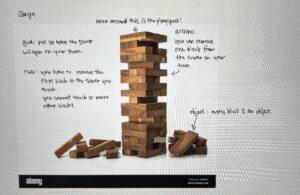- Identify the basic elements in a game of your choice (actions, goals, rules, objects, playspace, players).
I am choosing the game of Go, which is an ancient adversarial strategy game from China. I chose Go because it is famously complex (with an enormous possibility space) despite its very simple rules. I did search up some details about Go online to make sure I was not missing anything, and some information came from either Wikipedia or Britannica Encyclopedia.
- Actions: The allowable actions in Go are 1) placing one stone of your set color on an open spot on board on the intersection of any grid lines, and 2) passing, if you wish not to take any moves during your turn, and 3) surrendering.
- Goal: The goal of the game is to surround more territory of the board with your pieces than your opponent by the end of the game. At the end of the game, you receive one point for every spot you surround and one point for every enemy stone you capture.
- Rules: 1) Any string of stones currently on the board must be connected to a vacant point – that connection is termed a “liberty”, and in other words all strings of stones must have at least one liberty. 2) Any string of stones currently on the board that is connected to at least two vacant points cannot be captured. 3) If a string of one player’s stones is entirely surrounded by the other player’s stones, and all space around the stones is filled, the surrounded string has no liberties and is captured and removed from the board. 4) A stone cannot be placed on a point completely surrounded by enemy stones unless it makes a capture by doing so.
- Objects: The objects are 181 black and 180 white board pieces named stones.
- Playspace: The playspace is the board, which commonly has a 19×19 grid of lines, containing 361 points.
- Players: Two players who can play the game at the same time.
- As a thought experiment, swap one element between two games: a single rule, one action, the goal, or the playspace. For example, what if you applied the playspace of chess to basketball? Imagine how the play experience would change based on this swap.
For this experiment, I would want to swap the goals of an open-world multiplayer game like Minecraft with the goal of a cooperative first-person shooter game like Left 4 Dead 2, so that the goal of Minecraft is to shoot other people and survive the game. I think the players would have to be a lot more social, since interactions with other players are now crucial to winning, whether that is finding a team and cooperating with them or trying to outsmart/kill other teams. I also think the game would induce more excitement and stress, and become less centered around creation and more centered around resource gathering. The creation aspect would become far more strategic.
- Pick a simple game you played as a child. Try to map out its space of possibility, taking into account the goals, actions, objects, rules, and playspace as the parameters inside of which you played the game. The map might be a visual flowchart or a drawing trying to show the space of possibility on a single screen or a moment in the game.
One game I really enjoyed as a child was Janga. Picture of Janga is a stock photo from Alamy.
- Pick a real-time game and a turn-based game. Observe people playing each. Make a log of all the game states for each game. After you have created the game state logs, review them to see how they show the game’s space of possibility and how the basic elements interact.
Tic Tac Toe (turn-based game)
- Check takes middle
- Circle takes middle right
- Check takes lower right
- Circle takes lower middle
- Check takes upper left
Smurf Village (real-time game)
- Player is selecting a crop and planting seeds
- Player is harvesting crops
- Player is building a house
- Player is purchasing a new item in the store
- Player is creating new farm land
- Player is rearranging flowers or items in the village
- Player is sending some smurfs to complete a quest
- Player is playing a mini-game within the village
- Player is feeding animals in the sanctuary
- Player is interacting with the in game dialogue
In the turn-based game of tic tac toe, the space of possibility is very limited, as there are only nine spaces of the board that can be taken. The players use their respective mark (check or circle) to occupy a space, and usually the game comes to an end very quickly. In contrast, in a real time sandbox game like Smurf’s Village, the game space is very large, since there is no real “end” to the game and the primary mode of gameplay is to create new elements while interacting with existing ones. In that sense, the possible states of the game are quite literally expanding as the game moves on.





